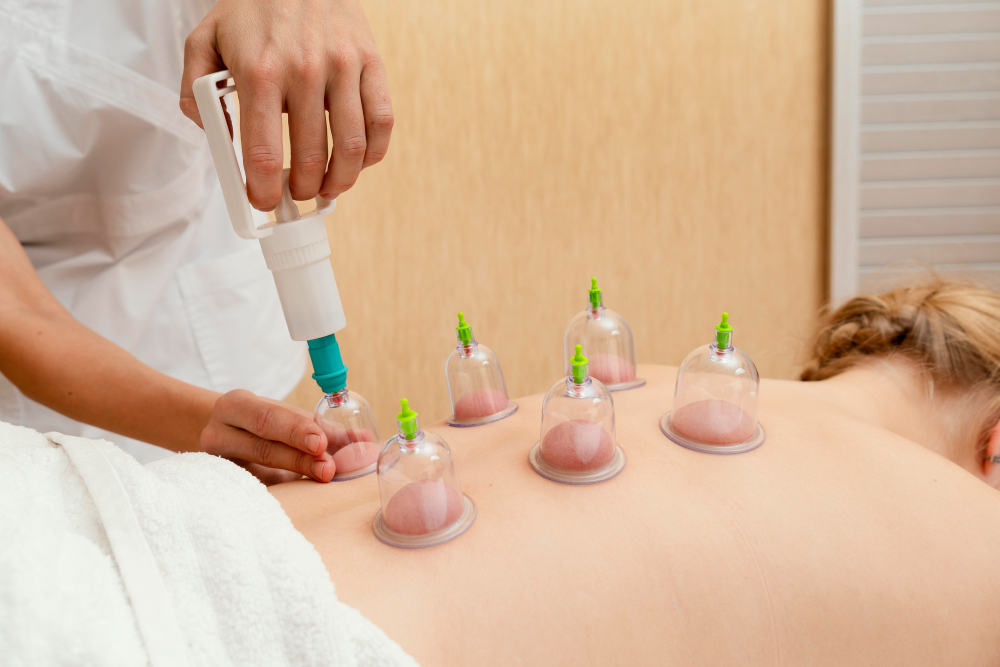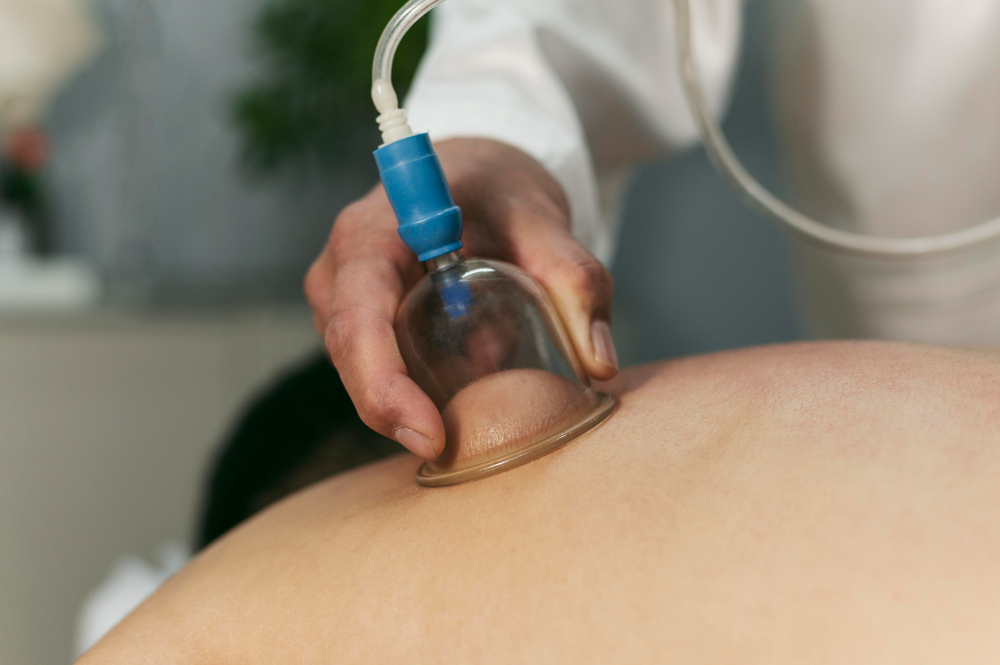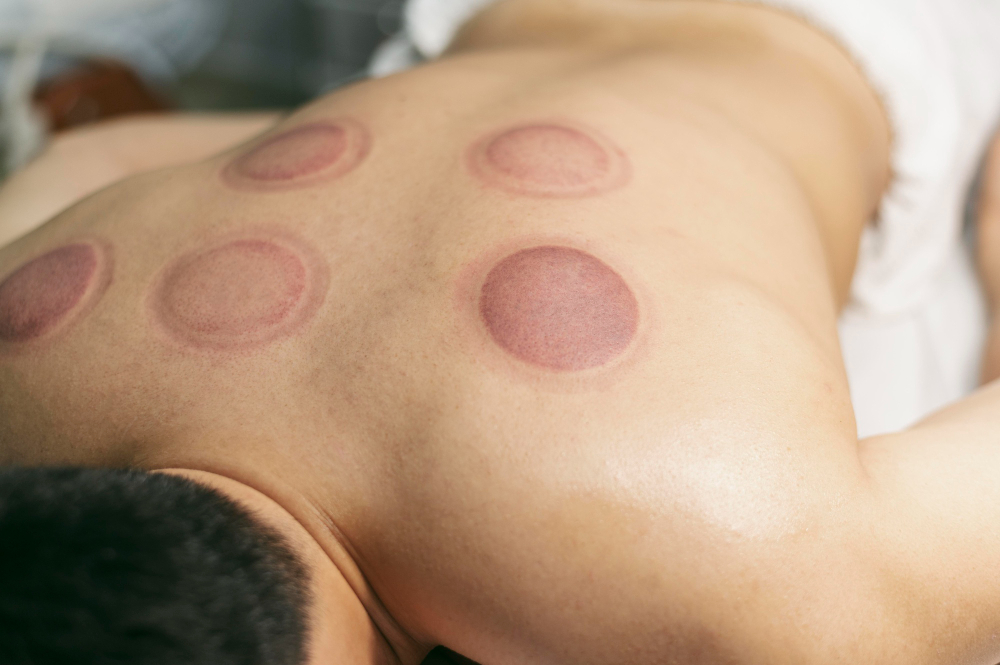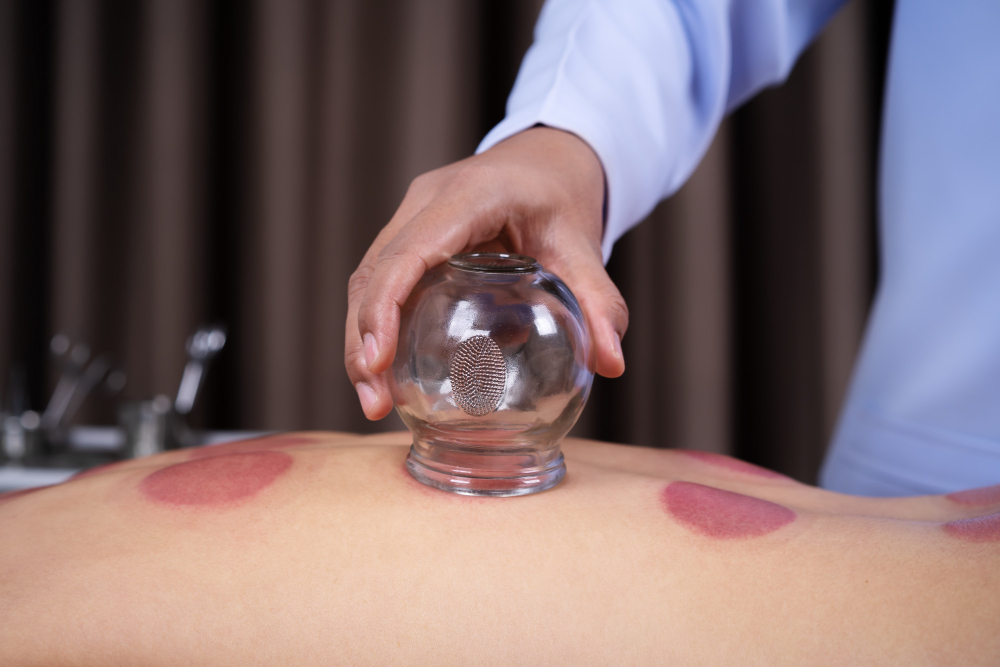Book Now
Dry Cupping

Dry Cupping
Shockwave therapy, sometimes called extracorporeal shock wave therapy (ESWT), is a minimally invasive procedure that involves sending shock waves to wounded body parts to ease pain and speed up recovery. Shock waves are acoustic waves that carry high energy to painful spots and myoskeletal tissues with subacute, subchronic, and chronic conditions.
Conditions
Dry cupping is used in traditional Chinese medicine and other alternative health practices to treat a variety of conditions. Here are some of the conditions it's commonly used for:
- Pain Relief: Some people use cupping to help manage pain, such as chronic neck or back pain. It is believed that the suction from the cups can help stimulate blood flow and promote healing.
- Muscle Soreness & Tension: Cupping can be used to help ease pain and tension in the muscles.
- Respiratory Conditions: Cupping has been used traditionally to help with respiratory conditions like bronchitis or the common cold, though scientific evidence supporting this use is limited.
- Digestive Issues: In traditional Chinese medicine, cupping is sometimes used to stimulate digestion.
- Skin Conditions: Some people use cupping to help manage conditions like acne or eczema, though again, scientific evidence supporting this use is limited.
- Mental Health: Based on the notion that it might aid in promoting relaxation and improving energy flow in the body, cupping is occasionally used as a method of reducing tension or anxiety.

Benefits
Cupping therapy, including dry cupping, is used in traditional Chinese medicine and other alternative health practices for a variety of purposes. The below-mentioned are some benefits of dry cupping.
- Pain Relief: Pain management is one of cupping therapy's most popular applications. It is frequently used to treat issues like persistent neck or back pain, and some studies indicate that it might be successful in this regard.
- Relaxation: Similar to other forms of massage, cupping can be a calming and unwinding experience that can lessen stress and enhance mental health.
- Increased Blood Flow: The suction created by cupping is thought to increase blood circulation to the area, which can promote healing and reduce muscle tension.
- Inflammation Reduction: More research is required to prove this impact, but some cupping advocates think it can assist to reduce inflammation in the body.
- Detoxification: While this concept is not generally recognized in Western medicine, some people find the idea appealing and report feeling refreshed or revitalized after a cupping session.
- Immune Function: Some traditional medicine systems suggest that cupping can help to stimulate the immune system, potentially helping to ward off illness.

Pre-Evaluations
Before you undergo wet cupping, a comprehensive health evaluation should be performed by a trained professional. This typically involves several steps:
- Medical History: The practitioner should take a detailed medical history. This includes inquiries about your present and previous medical issues, operations, prescription drugs you are using, and allergies you may have.
- Physical Examination: A general physical examination may be conducted to assess your overall health.
- Skin Examination: Since wet cupping involves making incisions in the skin, it is important to examine the skin for any conditions or infections that could contraindicate the procedure.
- Blood Tests: Wet cupping involves drawing blood, so it is important to know if you have any blood disorders such as anemia, hemophilia, or other bleeding disorders. A complete blood count (CBC) and coagulation tests may be ordered.
- Screening for Infectious Diseases: Practitioners may mandate screening for conditions in order to stop the spread of bloodborne viruses.
- Pregnancy Test: Wet cupping is generally not recommended for pregnant women.

Procedure
- Preparation: First, the therapist will clean the area of the skin where the cups will be placed. They might apply massage oil or cream to help the cups slide easily across the skin.
- Cup Application: The therapist will then apply a cup to the skin. The cup is heated to create a vacuum, which causes the skin to rise and redden as the blood vessels expand.
- Rest Period: The cups are typically left in place for several minutes while the skin underneath is drawn up and blood flow to the area is increased.
- Removal of the Cup & Incisions: After this, the therapist will remove the cup and make small, light incisions on the skin using a sterile instrument.
- Reapplication of the Cup: The cup is then reapplied to the same area, and the vacuum is created again. This time, a small amount of blood may be drawn out through the incisions and into the cup.
- Cleaning & Dressing: After the cup is removed, the area is cleaned and a dressing is applied to prevent infection.
- Aftercare: The therapist will provide instructions on how to care for the cupping site to prevent infection and promote healing.

Side Effects
While cupping is generally considered safe when performed by a trained professional, it can have potential side effects. Some of these include:
- Skin Marks: The most common side effect of cupping is skin discoloration or bruising. Circular skin marks left by the suction from the cups can persist anywhere between a few days and a few weeks.
- Skin Burns: If heat is used to create suction in the cups (a method known as fire cupping), there is a risk of burns, especially if the practitioner is not properly trained.
- Skin Infections: An infection can happen if the skin is injured. This is more frequent with wet cupping because it entails making tiny skin incisions, but it is still possible with dry cupping if the cups are not properly cleansed.
- Mild Discomfort or Pain: Some people may experience discomfort or mild pain during or after a cupping session.
- Allergic Reactions: These can occur if any oils or herbs used during the procedure cause an allergic skin reaction.
- Nausea or Lightheadedness: Particularly if trying for the first time, some people may experience dizziness or nausea following a cupping session.

